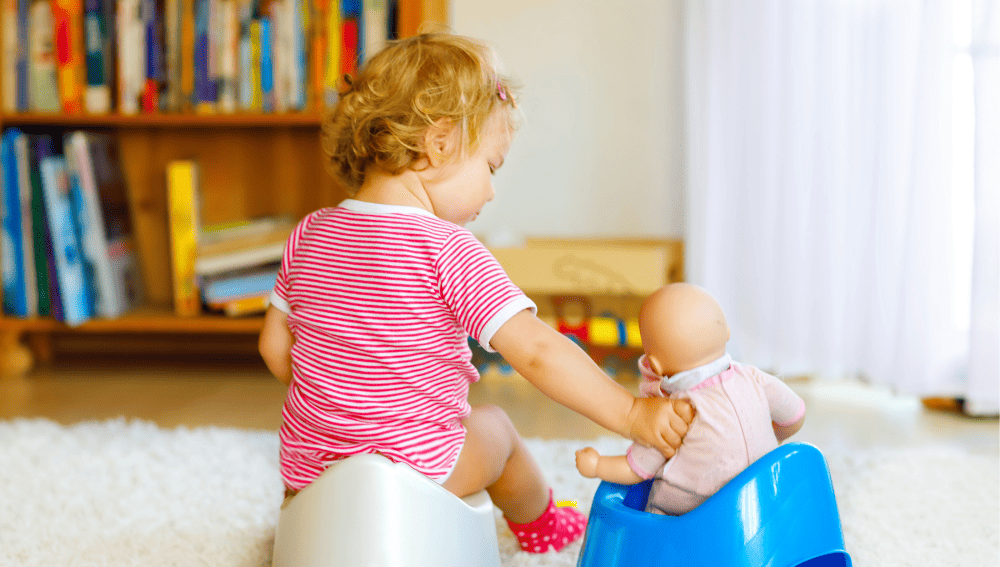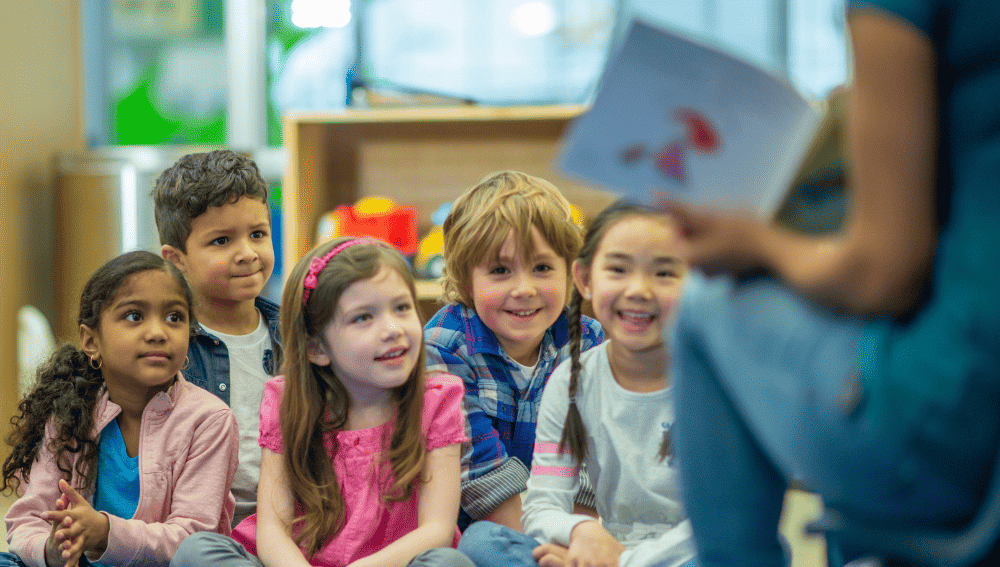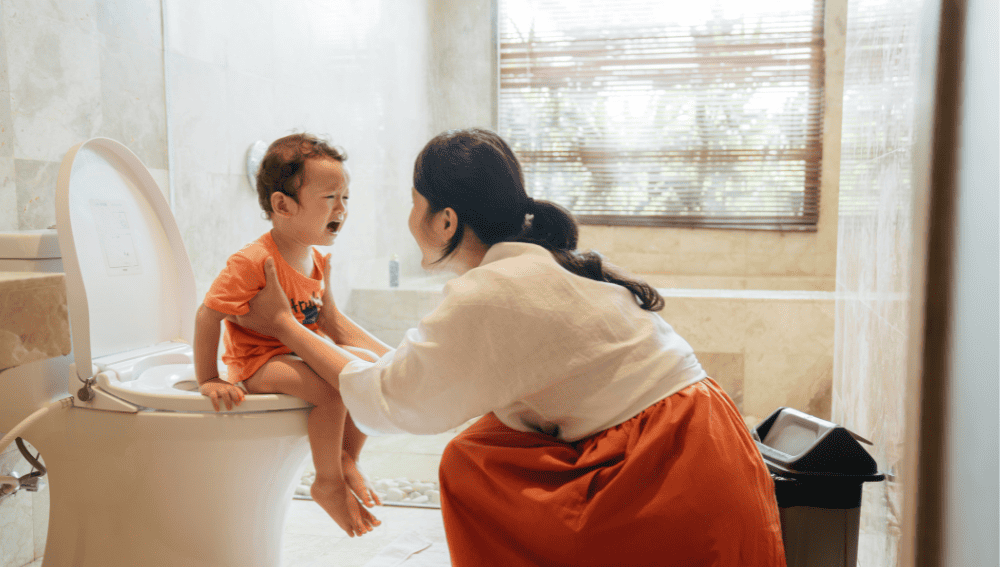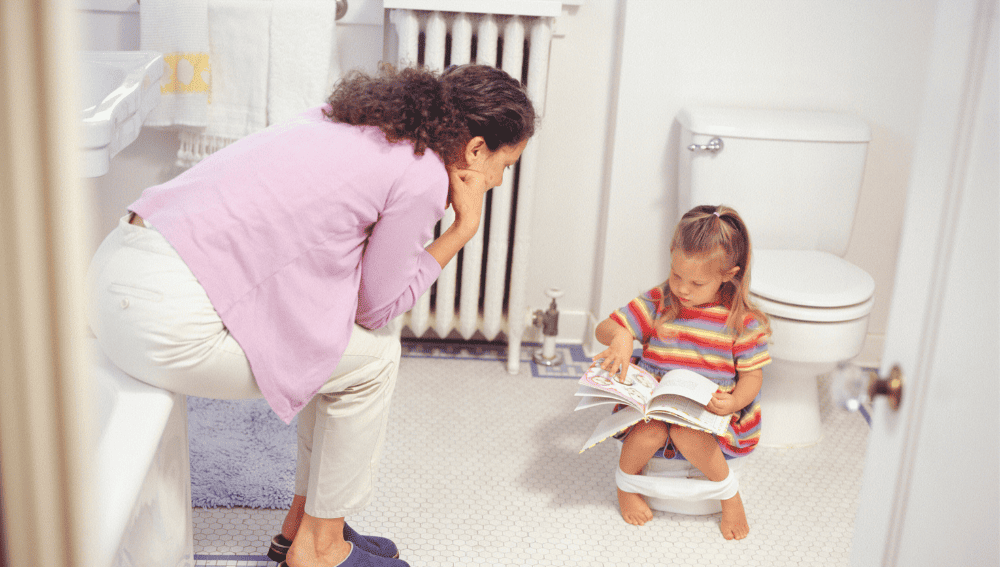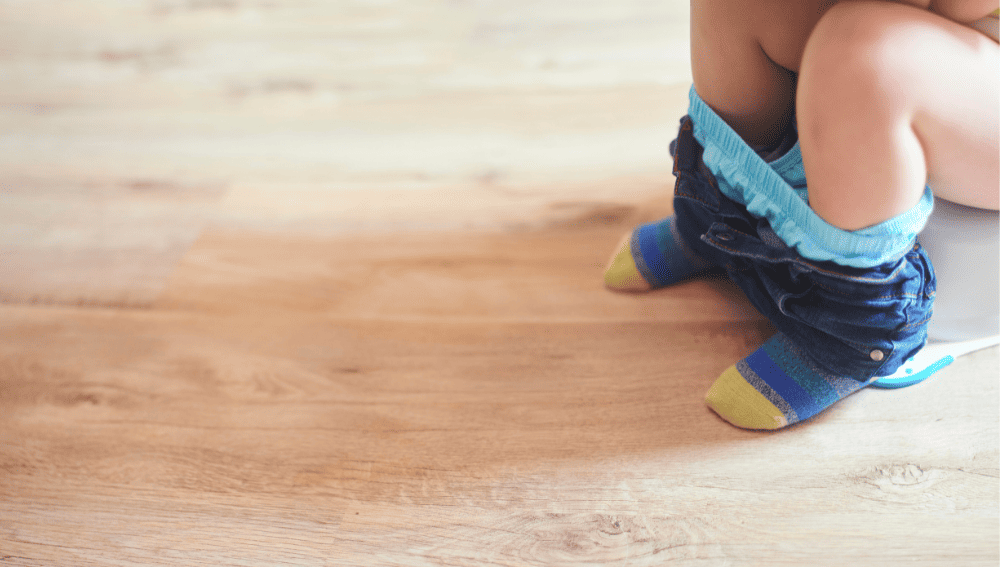Potty training can be a daunting task for parents. It requires patience, consistency, and a lot of effort. For many parents, the thought of sending their child to kindergarten not potty trained can be overwhelming.
However, it is not uncommon for children to enter kindergarten without being fully potty trained.
While many schools require children to be potty trained before starting kindergarten, it is not a universal requirement. Some schools may allow children who are not fully potty trained to attend, while others may require that children are fully trained before they can start.
Understanding the role of kindergarten in toilet training and the challenges that come with potty training can help parents make informed decisions about their child’s readiness for school.
Key Takeaways
- Kindergarten may or may not require children to be fully potty trained before starting school.
- Parents should consider their child’s readiness for potty training before deciding whether to enroll them in kindergarten.
- Potty training can be a challenging process, but with patience and consistency, children can learn to use the toilet successfully.
Understanding Potty Training
Potty training is a significant milestone in a child’s life, marking the transition from diapers to using the toilet. It is a process that requires patience, consistency, and positive reinforcement. While most children are potty trained by the age of three, some children may take longer to learn this skill.
Parents should start potty training when their child shows signs of readiness, such as staying dry for longer periods, showing interest in the toilet, and being able to communicate their needs.
It is important to establish a routine and encourage the child to use the toilet regularly, even if they do not need to go.
Pediatricians recommend using positive reinforcement, such as praise and rewards, to encourage children to use the toilet. Parents should avoid punishment or negative reinforcement, as it can lead to anxiety and delay the process.
It is essential for parents to understand that every child is different, and there is no set age for potty training. Some children may take longer to learn this skill, and that is okay. Parents should be patient and supportive, and seek guidance from their pediatrician if they have concerns.
In conclusion, potty training is an important step towards independence for children. It requires patience, consistency, and positive reinforcement.
Parents should start the process when their child shows signs of readiness, establish a routine, and use positive reinforcement to encourage their child. Remember, every child is different, and there is no set age for potty training.
The Role of Kindergarten in Toilet Training
Kindergarten is an important milestone in a child’s education and development. One of the many challenges that parents face when preparing their child for kindergarten is toilet training.
The question of whether a child can attend kindergarten without being potty trained is a common concern for parents.
Kindergarten teachers play a crucial role in toilet training. They are responsible for helping children develop the necessary skills to use the bathroom independently.
Teachers work with parents to ensure that their child is ready for kindergarten and provide guidance and support throughout the toilet training process.
The school district and public schools also have policies in place regarding toilet training. These policies vary from district to district and school to school, but generally, children are expected to be potty trained before attending kindergarten.
However, exceptions can be made for children with special needs or developmental delays.
Education is a key component of toilet training. Children need to understand the importance of using the bathroom and how to do it properly.
Kindergarten teachers use a variety of methods to teach children about toilet training, including books, videos, and hands-on activities. They also provide positive reinforcement and praise for children who are successful in using the bathroom independently.
In conclusion, while it is preferable for children to be potty trained before attending kindergarten, it is not always a requirement. Kindergarten teachers, schools, and districts play an important role in toilet training and are there to support parents and children throughout the process.
With patience, guidance, and education, children can successfully transition to using the bathroom independently in kindergarten.
Toilet Training Readiness
Toilet training is a significant milestone in a child’s development. However, it is essential to ensure that the child is ready before starting the training process. Toilet training readiness is not just about age; it also involves emotional and developmental milestones.
Emotional readiness is crucial for toilet training. A child who is not emotionally ready may find the process stressful and frustrating.
Signs of emotional readiness include showing an interest in using the toilet, being able to communicate their needs, and being able to follow simple instructions.
Developmental milestones are also essential for toilet training readiness. A child needs to have sufficient bladder and bowel control to be able to hold urine and stool for a reasonable amount of time.
They should also be able to walk to the bathroom independently, pull down their pants, and sit on the toilet.
Most children are ready for toilet training between the ages of 2 and 3. However, some children may not be ready until they are 4 years old. It is essential to remember that every child is different and will reach milestones at their own pace.
In conclusion, toilet training readiness is crucial for a successful toilet training experience. Parents should look out for signs of emotional and developmental readiness before starting the training process.
If a child is not ready, it is best to wait until they are before beginning toilet training.
Challenges in Potty Training
Potty training can be a challenging process for both parents and children. It requires patience, dedication, and consistency.
While some children may easily adapt to potty training, others may struggle with it. Here are some common challenges that parents may face during the potty training process.
Accidents
It is common for children to have accidents during the potty training process. Accidents can happen due to several reasons, such as forgetting to use the potty, not being able to hold it in, or not recognizing the urge to go.
It is important for parents to remain calm and patient when accidents occur and avoid shaming or punishing the child.
Stress and Pressure
Potty training can be a stressful experience for children, especially if they feel pressured to perform.
Parents should avoid putting too much pressure on their child and allow them to progress at their own pace. It is also important to create a positive and supportive environment to help alleviate any stress or anxiety.
Resistance and Refusal
Some children may resist or refuse to use the potty. This can be due to fear, discomfort, or a lack of interest. Parents should try to identify the underlying cause of resistance and address it accordingly.
It may be helpful to provide incentives or rewards for using the potty, or to make the process more fun and engaging.
Power Struggle
Potty training can sometimes turn into a power struggle between parents and children. This can occur when parents try to force their child to use the potty or when children refuse to comply with their parents’ requests.
It is important for parents to avoid power struggles and instead use positive reinforcement and encouragement to motivate their child.
Difficulties
Some children may experience difficulties with potty training, such as constipation or bladder control issues. It is important for parents to consult with their child’s pediatrician if they notice any persistent difficulties or concerns.
Fears
Children may also develop fears related to potty training, such as fear of falling in the toilet or fear of the flushing sound.
Parents should try to address these fears and provide reassurance to their child. It may be helpful to use a smaller potty seat or to allow the child to flush the toilet themselves.
Overall, potty training can be a challenging process, but with patience, consistency, and a positive attitude, parents can help their child successfully transition out of diapers.
Medical Considerations in Potty Training
When it comes to potty training, there are some medical considerations that parents should keep in mind. While most children are ready to start potty training between the ages of 2 and 3, some children may have medical reasons for delaying the process.
One common medical issue that can affect potty training is constipation. Children who are constipated may have difficulty passing stool, which can make them reluctant to use the toilet.
In some cases, constipation can also cause accidents because the child may not be able to hold in the stool.
Infections can also make potty training more difficult. Urinary tract infections can cause pain and discomfort when urinating, which can make children afraid to use the toilet. In some cases, children may also experience accidents because they are unable to hold in the urine.
In some cases, there may be an underlying medical reason why a child is not yet potty trained. For example, children with developmental disorders may have difficulty understanding the concept of using the toilet.
In these cases, it is important to work with a doctor or specialist to develop a plan that takes the child’s needs into account.
Overall, parents should be aware of any medical issues that may be affecting their child’s ability to potty train. By working with a doctor and being patient, most children can successfully learn to use the toilet on their own.
Potty Training Techniques and Tools
Potty training is an essential skill that every child must learn before attending school. It is a process that requires patience, consistency, and positive reinforcement.
There are various potty training techniques and tools that parents can use to help their child learn this skill.
Toilet Training
Toilet training is the first step in potty training. Parents should start by introducing their child to the toilet and explaining how it works.
They can also use a potty chair to help their child get used to the idea of sitting on the toilet. Parents should encourage their child to use the toilet regularly, especially after meals and before bedtime.
Training Pants
Training pants are an excellent tool for parents to use during the potty training process. They are designed to be more absorbent than regular underwear, which can help prevent accidents.
Parents can also use training pants to help their child feel more comfortable when transitioning from diapers to underwear.
Potty Chair
A potty chair is a small chair that is designed for children to use when they need to go to the bathroom. It is an excellent tool for parents to use during the early stages of potty training.
Parents can place the potty chair in a convenient location, such as the bathroom or living room, to encourage their child to use it.
Schedule
Establishing a schedule is an essential part of potty training. Parents should create a routine for their child, including regular bathroom breaks. They can also use a timer or alarm to remind their child when it is time to use the bathroom.
Hygiene
Teaching good hygiene habits is an essential part of potty training. Parents should teach their child to wash their hands thoroughly after using the bathroom. They can also use wipes or a bidet to help their child stay clean.
Positive Reinforcement
Positive reinforcement is an effective way to encourage children to use the bathroom. Parents can use rewards, such as stickers or small toys, to motivate their child to use the toilet. They can also praise their child for their efforts and progress.
Words
Using the right words is essential when teaching children about potty training. Parents should use simple, easy-to-understand language when explaining the process. They can also use fun, child-friendly words to make the experience more enjoyable for their child.
In conclusion, potty training is an important skill that every child must learn before attending school.
Parents can use various techniques and tools to help their child learn this skill, including toilet training, training pants, potty chairs, establishing a schedule, teaching good hygiene habits, using positive reinforcement, and using the right words.
Special Circumstances in Potty Training
Potty training can be a challenging process for both parents and children. However, some special circumstances can make it even more difficult.
In this section, we will discuss some of these special circumstances and provide some tips on how to handle them.
Special Needs and Disabilities
Children with special needs or disabilities may require additional time and support when it comes to potty training. Parents should work closely with their child’s healthcare provider to develop a plan that takes into account their unique needs.
Some children may benefit from visual aids or social stories to help them understand the process better.
Developmental Delays
Children with developmental delays may take longer to learn how to use the potty. Parents should be patient and provide plenty of positive reinforcement.
It may also be helpful to break the process down into smaller steps and focus on one skill at a time.
New Sibling
The arrival of a new sibling can be a significant life change for a child. It may cause regression in potty training progress. Parents can help by making sure the child feels included in the new baby’s care and providing extra attention and reassurance.
Moving
Moving to a new home can be stressful for a child and may disrupt their potty training routine. Parents should try to maintain consistency as much as possible by keeping the child’s potty schedule the same and creating a familiar environment in the new home.
Trauma
Traumatic experiences can impact a child’s potty training progress. Parents should seek the help of a mental health professional if they suspect their child is struggling due to trauma.
It’s essential to be patient and understanding and provide a safe and supportive environment for the child.
In conclusion, potty training can be a challenging process, but with patience and understanding, parents can help their child succeed. For children with special circumstances, it may take longer, but with the right support, they can achieve success.
Potty Training and School Policies
Schools have varying policies regarding potty training and whether or not a child can attend kindergarten if they are not yet fully potty trained. Some schools require that children be fully potty trained before they can attend kindergarten, while others are more lenient.
Most schools have policies in place regarding potty training, and parents should check with their child’s school to determine what their specific policy is.
Some schools require that children be fully potty trained before they can attend kindergarten, while others may allow children to attend as long as they are making progress towards being fully potty trained.
Daycare centers also have their own policies regarding potty training, and parents should check with their daycare provider to determine what their policy is.
Some daycare centers may require that children be fully potty trained before they can attend, while others may allow children to attend as long as they are making progress towards being fully potty trained.
It is important to note that potty training can be a difficult and time-consuming process, and every child is different. Some children may take longer than others to become fully potty trained, and parents should not feel pressured to rush the process.
By the time a child reaches third grade, they are expected to be fully potty trained, and it is unlikely that a school would allow a child to attend if they were not.
However, if a child is still struggling with potty training at this age, parents should consult with their child’s pediatrician to determine if there are any underlying medical issues that may be contributing to the problem.
The Role of Clothing in Potty Training
Clothing plays a crucial role in potty training a child. It not only protects their clothes from getting soiled but also helps them understand the concept of using the toilet.
Here are some ways in which clothing can aid in potty training:
Diapers
Diapers are the go-to option for parents with infants and toddlers who are not yet potty trained. They are designed to absorb urine and feces, keeping the baby dry and comfortable.
However, using diapers for too long can hinder the potty training process. It is recommended to gradually reduce the use of diapers and introduce underwear or pull-ups.
Pants
Pants are an essential part of a child’s wardrobe during potty training. They should be easy to pull up and down, allowing the child to use the toilet independently.
Elastic waistbands and loose-fitting pants are ideal for this purpose. Parents should also consider pants made of materials that are easy to clean and dry, such as cotton or polyester.
Underwear
Underwear is the next step after diapers in potty training. It helps the child understand the feeling of wetness and encourages them to use the toilet. Parents should choose underwear that is comfortable and fits well, without being too tight or too loose.
They can also opt for underwear with fun designs or characters, making it a positive experience for the child.
Pull-Ups
Pull-ups are a transitional option between diapers and underwear. They resemble underwear but have the absorbency of a diaper.
They are ideal for outings and trips when access to a toilet may be limited. However, parents should not rely on pull-ups for too long as it can delay the potty training process.
Dresses
Dresses can be tricky during potty training, especially for girls. Parents should opt for dresses that are easy to pull up and down, without too many layers or buttons.
They can also consider pairing dresses with leggings or shorts to make it easier for the child to use the toilet.
In conclusion, clothing plays a crucial role in potty training a child. Parents should choose clothing that is comfortable, easy to clean, and aids in the potty training process.
Gradually reducing the use of diapers and introducing underwear or pull-ups can help the child understand the concept of using the toilet independently.
Dealing with Potty Training Setbacks
Potty training setbacks are a common occurrence in the life of a child. Even after months of successful potty training, accidents can still happen. It is important for parents and caregivers to handle these setbacks with patience and understanding.
One common issue is when a child has accidents during the daytime. This can be due to a variety of reasons such as being too engrossed in play or forgetting to go to the bathroom.
In such cases, it is important to remind the child to use the bathroom frequently and to make it a routine.
Another issue that parents face is when a child has bowel movements in their underwear. This can be due to various reasons such as constipation or not being able to recognize the urge to go.
Parents should encourage the child to use the bathroom regularly and to eat a balanced diet to avoid constipation.
Urine accidents can also be a problem, especially at night. Parents can use waterproof mattress protectors and encourage the child to use the bathroom before going to bed. It is also important to avoid giving the child fluids close to bedtime.
If a child is struggling to become independent in using the bathroom, parents should provide them with the necessary tools and resources. This includes a potty chair, step stool, and wipes. Parents should also encourage the child to wipe themselves after using the bathroom.
It is important to note that punishment and discipline should not be used as a means of potty training. Instead, parents should provide positive reinforcement and encouragement.
This includes praising the child for their progress and using rewards such as stickers or small toys.
Consistency is key when it comes to potty training. Parents should establish a routine and stick to it. This includes taking the child to the bathroom at regular intervals and encouraging them to use the bathroom before leaving the house.
In conclusion, setbacks are a normal part of the potty training process. Parents should remain patient and understanding while providing the necessary tools and resources for their child to succeed. With consistency and positive reinforcement, the child will eventually become potty trained.
Potty Training and Sibling Dynamics
Potty training can be a challenging and stressful time for both parents and children. When a child is not potty trained, it can also impact the dynamics between siblings.
Younger siblings may feel left out or jealous if their older sibling is receiving more attention for being potty trained.
This can lead to feelings of resentment and cause tension within the family. Parents can help alleviate this by involving younger siblings in the potty training process and providing them with positive reinforcement for their own accomplishments.
On the other hand, older siblings may feel embarrassed or frustrated if their younger sibling is not yet potty trained. This can lead to feelings of shame and cause the older sibling to distance themselves from their younger sibling.
Parents can help by explaining the process of potty training and encouraging older siblings to be supportive and patient with their younger sibling.
In a team environment, such as a kindergarten classroom, it is important for parents to communicate with teachers about their child’s potty training status.
Teachers can work with parents to create a plan for potty training at school and provide support and encouragement for the child. It is also important for parents to be understanding and patient if their child has accidents at school, as this is a normal part of the potty training process.
Overall, potty training can have an impact on sibling dynamics and the child’s interactions in a team environment. However, with patience, understanding, and positive reinforcement, parents can help their child successfully navigate this important developmental milestone.
Speech and Potty Training
When it comes to speech and potty training, there is no direct correlation. However, some experts believe that there may be a link between the two.
According to the American Speech-Language-Hearing Association, children who struggle with potty training may also have difficulty with speech and language development. This is because both skills require the ability to control and coordinate muscles, which can be a challenge for some children.
It’s important to note that not all children who struggle with potty training will have speech and language delays, and vice versa. Each child is unique and may develop at their own pace.
Parents can help support their child’s speech and language development by engaging in activities that promote language skills, such as reading books, singing songs, and having conversations.
It’s also important to provide a supportive and encouraging environment for potty training, without placing undue pressure or stress on the child.
Overall, while there may be a link between speech and potty training, it’s important to approach each skill separately and provide individualized support for each child’s unique needs.
Frequently Asked Questions
Can a child attend kindergarten if they are not yet potty trained?
Yes, a child can attend kindergarten even if they are not potty trained. However, it is important to note that some schools may have different policies regarding potty training requirements for kindergarten attendance. Parents should check with their child’s school to determine what their policy is.
What are the options for parents of children not yet potty trained for kindergarten?
Parents of children who are not yet potty trained have a few options.
They can choose to delay their child’s enrollment in kindergarten until they are potty trained, enroll their child in a preschool program that focuses on potty training, or work with their child to become potty trained before starting kindergarten.
What are the consequences of sending a child to kindergarten who is not yet potty trained?
Sending a child to kindergarten who is not yet potty trained can result in embarrassment for the child and inconvenience for the teacher and other students. It can also be stressful for the child and may negatively impact their self-esteem.
How can parents help their child become potty trained before starting kindergarten?
Parents can help their child become potty trained before starting kindergarten by creating a consistent routine, using positive reinforcement, and being patient and supportive. It is important to remember that every child is different and may require different approaches to potty training.
What are some common approaches for potty training a child before kindergarten?
Common approaches for potty training a child before kindergarten include the “three-day method,” rewards-based systems, and using a potty training chart. Parents should choose an approach that works best for their child and their family.
Are there any laws or regulations regarding potty training requirements for kindergarten attendance?
There are no federal laws or regulations regarding potty training requirements for kindergarten attendance. However, some states or school districts may have their own policies in place. Parents should check with their child’s school to determine what their policy is.

Iesha is a loving mother of 2 beautiful children. She’s an active parent who enjoys indoor and outdoor adventures with her family. Her mission is to share practical and realistic parenting advice to help the parenting community becoming stronger.

